There are over five billion videos on YouTube. So, if you’ve been creating videos with clickbait titles in the hope of going viral, you may as well buy a lottery ticket – it’s no plan for channel growth.
Growing a YouTube channel is a long-term venture. Best achieved by regularly uploading quality videos that give your audience more of what they are looking for.
When you are trying to grow, it’s natural to want to compare yourself to other channels, but resist the temptation! YouTube channels exist in viewer bubbles – it’s your unique combination of content, presentation and production values that keeps your viewers watching.
But you don’t nail it every time. So how do you figure out what it is your audience likes most about your channel? Sure you can keep an eye on your likes, dislikes, and comments, but these don’t give you the full picture.
Fortunately, YouTube provides you with a sharper view, with lots of in-depth analytics about your channel.
This post looks at how you can use your analytics to better understand your audience and how you then use that knowledge to grow your channel. First, though, it’s crucial to know how YouTube ranks videos and why clickbait doesn’t work.

How YouTube Ranks Videos
Before 2012, YouTube ranked videos based solely on view count. It didn’t matter if a viewer watched one second or five minutes, both counted as a view.
This led to an increase in YouTubers using clickbait titles to try and game the system. YouTube had to do something – video content frequently wasn’t delivering on the promise of the title.
So after 2012, Youtube added in watch time and session duration to its ranking algorithm, resulting in an improvement of content quality. Today, YouTube also puts ranking weight on how engaged viewers are with content. Relying on things like watch time, likes and dislikes, and subscribes, amongst other factors.
YouTube wants to keep users on the platform, consuming content and viewing paid advertisements.
And did you know that 70% of all videos viewed on YouTube are those suggested by the YouTube ranking algorithm? If you want to grow your channel and appear more in the YouTube recommended video lists, then you need to find out what parts of your content users like most, and plan more of it.
But, before you use your analytics to make content decisions, make sure you have uploaded a minimum of 20-30 videos. Data on only five or six videos will not be helpful enough to draw conclusions from. So if you have only uploaded a few videos so far, first work on recording and uploading more videos.
Where to Find YouTube Analytics
To access your analytics, first, log in to your YouTube account. Next in the top right of the screen, click on the small circle showing your profile picture or first initial. Then, from the drop-down menu, select ‘YouTube Studio’.
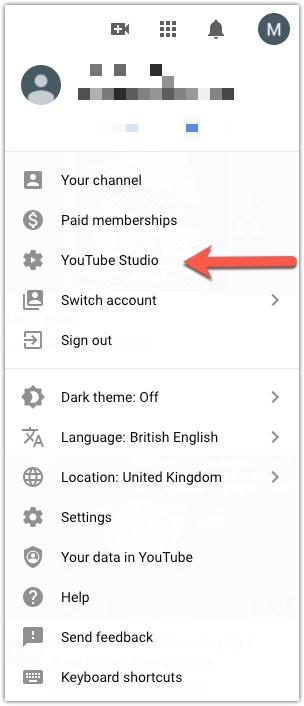
When the channel dashboard loads, on the left-hand menu, select ‘Analytics’.

The main Analytics screen then loads.

How to Use YouTube Video Views Analytics.
You may think you know what your audience wants. But, until you see how viewers actually interact with your channel, you can’t be totally sure. To start the process on the main analytics screen, make sure you have the ‘Views’ tab selected and click ‘see more’.

This loads up a more detailed list of your videos and some headline analytics. First, make sure that you have all the ‘lifetime’ data of your channel showing by selecting the data function in the top right corner of the screen.
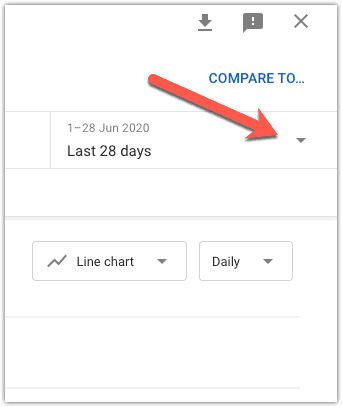
Then from the drop-down list, select the ‘Lifetime’ option, which will show all the analytics data from the time your channel started.
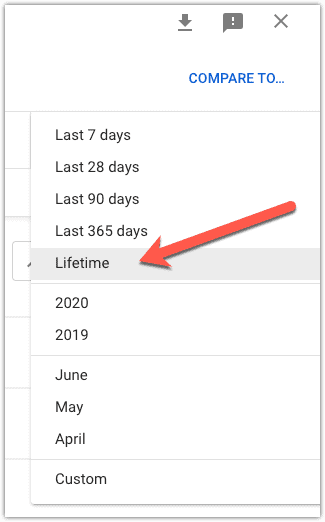
Next sort your videos in descending order of views so that your most-watched videos are at the top.
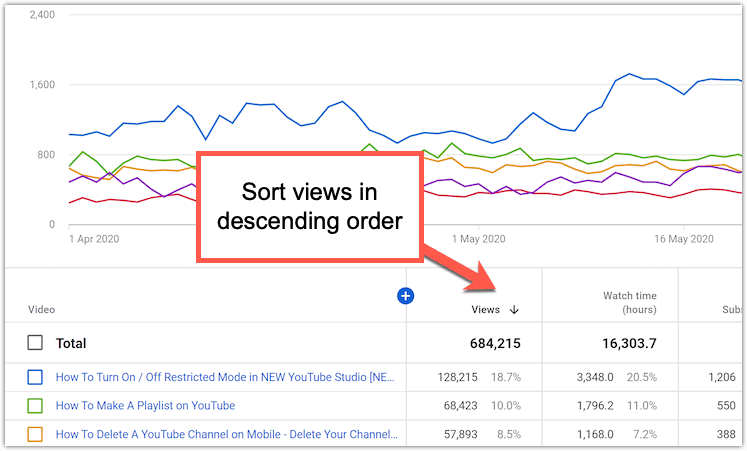
Use this list to gauge what your audience likes about your channel. Figure out why your popular videos are doing better than ones that fell flat. See if there’s a pattern. Are your most popular videos a hot topic? Maybe useful tutorials or when you live streams.
Whatever the reason, the content of those videos is the kind that your channel viewers find most compelling. Look for these trends then aim to make more videos like them.
For example, I made a video about how to make a playlist on YouTube which was well received. When my analytics showed me how popular it was, I created another one, this time showing three ways to make a playlist.
YouTube Impressions and Click-Through Rates Explained.
In the same analytics section as Video Views, further along there are two other columns titled ‘impressions’ and ‘impressions click-through rates’.
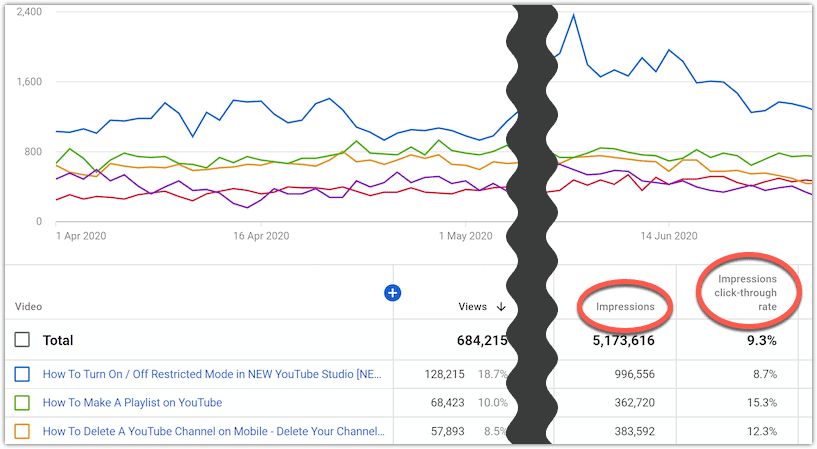
These data in those columns indicate:
Impressions. The number of times a video thumbnail has been seen, either from a search or by YouTube suggestion.
Impressions click-through rate. The percentage of times a viewer saw your thumbnail and clicked on it to watch your video.
Now, say that your click-through rate is 2%, if you can get that up to 4% then you will double your video viewers. So the impressions and impressions click-throughs measure how good your thumbnail and titles are.
Re-order your click-through rate column, again by descending order, and take a look at your best performing titles and thumbnails. What makes the top ones stand out from other titles and thumbnails? Perhaps a thumbnail was well composed, or it could be the title was snappy.
Use this feedback to improve your existing thumbnails and titles, then use what you’ve learned when you create them for your new content too.
If you need help getting started with Thumbnails, why not check out my Thumbnail Pack where I give you 75+ easy to edit psd template files to help you level up your thumbnail game and get more views!
Use Your YouTube Subscribers Analytics to Plan Content
Now let’s take a look at subscriber analytics and how you can use them to grow your channel. In the same ‘see more’ section you used for the video view count locate the column headed ‘Subscribers’.
Make sure the time period is showing the lifetime data again and order the data in descending order.
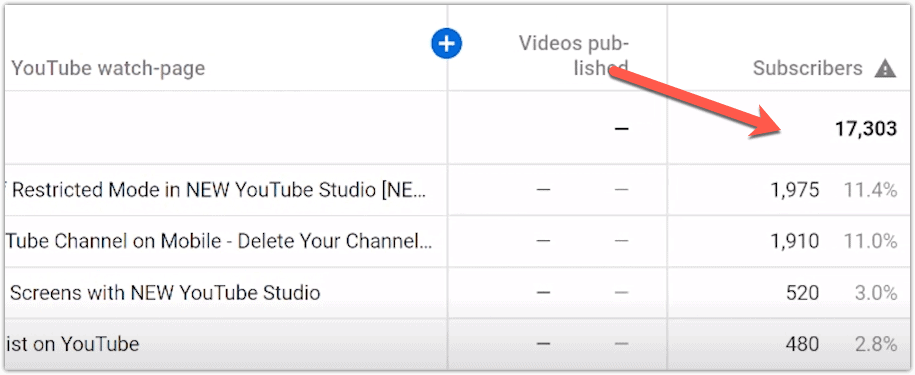
Follow the same process as before and examine the top videos to see what the common factors were. Did they have a certain length, content topic, or presenting style? Maybe you made a request or showed an extended caption asking viewers to subscribe in a different way to your other videos.
Whatever the factor, plan new content that replicates it. Whether it’s similar, updated, or complimentary, the analytics are telling you that certain content you make turns a section of your viewers into subscribers. Do it again.
If you make a successful video about knitting a jumper, make one for knitting a hoodie. If you made one showing how to find a weapon in a game, make one for how to use it.
YouTube Watch Time – The Most Important Metric?
Of course, views and subscribers are essential to understand. But an arguably more important metric for YouTube is watch time. Watch time is an estimation of total hours spent by viewers watching your videos.
On the main analytics screen, select the tab showing ‘Watch time (hours) then select ‘see more’ at the bottom.

As I mentioned earlier, YouTube ranks videos, in part, by how long viewers watch videos. Why do they do this? Because it demonstrates how engaging and useful your videos are to your viewers.
It makes sense when you understand that YouTube’s entire business model is to keep people viewing content and adverts on their platform. It follows then, that channels which get good overall watch time are more likely to show up for searches, or in a selection of videos that YouTube recommends.
So, if you are getting click-throughs and good view counts, but people aren’t watching many hours of your videos then (there is no way to sugar coat this) you need to make better videos.
Fortunately, YouTube offers data you can use to see precisely when viewers stopped watching your video; audience retention.
YouTube Audience Retention Metric Explained
The audience retention metric is shown as a percentage figure. If you upload a ten-minute video and your audience, on average, watches five minutes, then you’ll have an audience retention measure of 50%.
Select one of your videos to view the analytics screen shown below, then click ‘see more’ in the audience retention section.
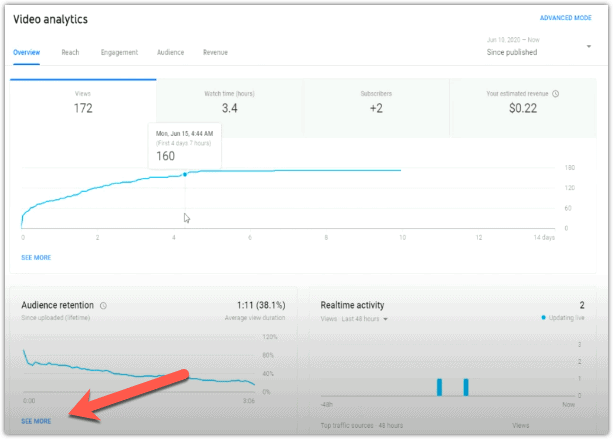
As you can see, in the graph below, audience retention starts at 100% and over time gradually drops off as viewers stop watching the video. In the example below the overall retention rate is 30.4%

You can play your video and watch as it tracks along the graph so you can see what you were doing at the time when viewers stopped watching.
Did you lose a lot of viewers when your content got a bit dry or technical? Maybe you had a section you felt was amusing but turned your viewers off?
This is a powerful tool. It gives you feedback on what works and doesn’t work. You can use it to help you plan future content and give your audience more of what they want.
Also, did you notice the bump in the graph?

How can audience retention go up if viewers have gone away? This bump tells you that viewers are coming back to rewatch a portion of your video. Whatever you were doing at that part of the video is clearly of value to your audience, so it’s a good idea to do more similar content.
Conclusion
Getting to grips with your analytics shouldn’t be as scary as it sounds. Once you understand what they represent and how you can use them to understand your viewers, you’ll probably find yourself hooked on them.
And we’ve only scratched the surface here. There are lots of other metrics in your analytics that help you make better videos. There are also analytics for things like audience demographics and YouTube features like cards.
Explore the entire analytics section to see what other metrics you can use to fuel YouTube channel growth.
If you need more help to stand out, optimise and brand your videos better – check out my resources page where I list everything I use to grow my channel.

